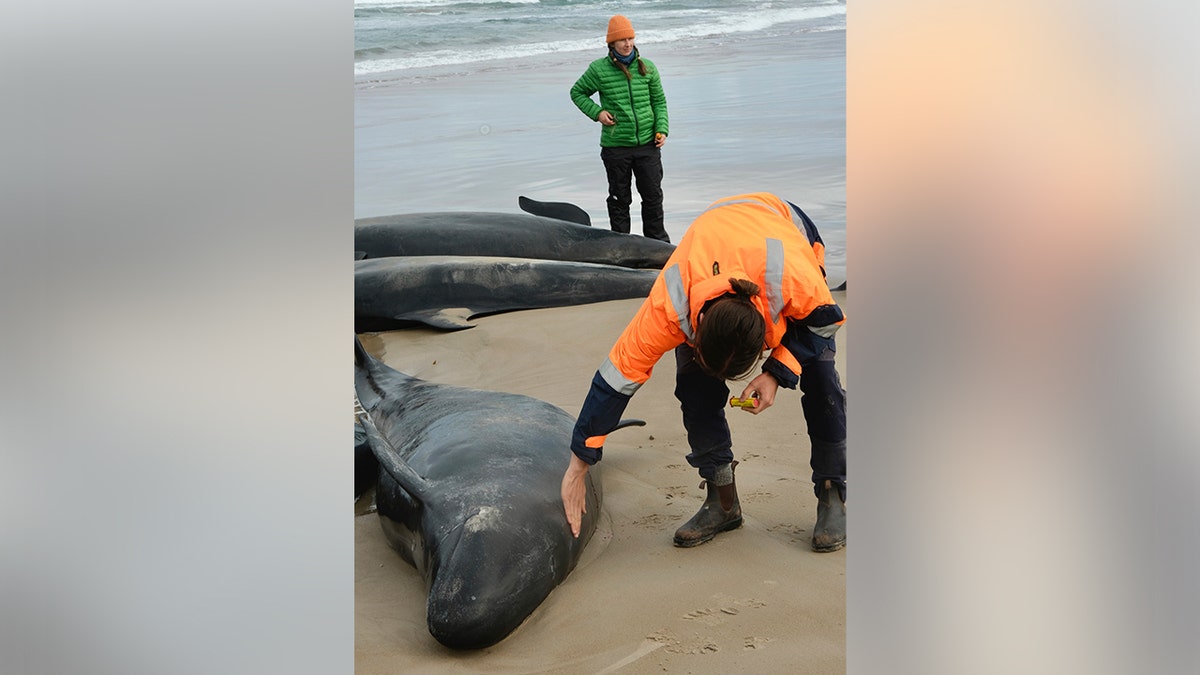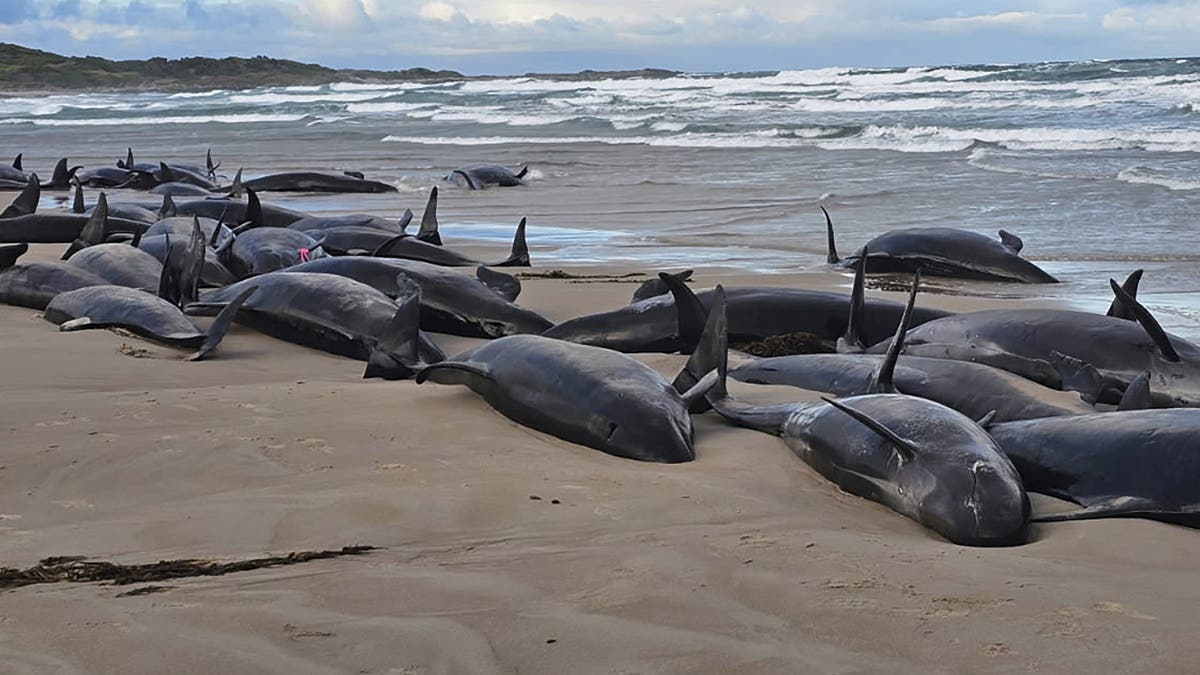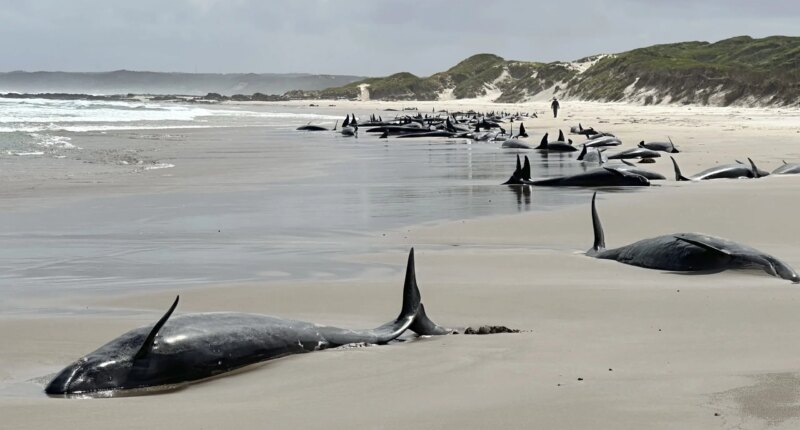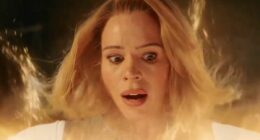-
Graham mentioned that they were out in the water earlier today attempting to relocate and refloat two stranded whales. Unfortunately, their efforts were unsuccessful due to challenging ocean conditions that prevented the animals from passing the breaking waves. The whales continue to strand repeatedly, posing a significant challenge for the rescuers.
Marine biologist Kris Carlyon said the survivors would be euthanized.
A photo released by the Department of Natural Resources and Environment Tasmania depicts more than 150 false killer whales stuck on a distant beach near Arthur River in Tasmania, Australia. The incident occurred on Feb. 19, 2025. (NRE via AP)
“The longer these animals are out stranded, the longer they are suffering. All alternative options have been unsuccessful,” Carlyon said.
The department said there were 136 survivors on Wednesday morning but that assessment was revised down to 90 within a few hours.
The inaccessibility of the beach, ocean conditions and challenges to getting specialist equipment to the remote area complicated the response.
The juvenile whales had a weight as low as 1,100 pounds, whereas the adult ones weighed up to 3.3 tons. Despite the misleading name, false killer whales are among the largest members of the dolphin family.

Marine biologist Kris Carlyon said the surviving animals would be euthanized. All other options have proven unsuccessful. (NRE via AP)
Department liaison officer Brendon Clark said the stranding was the first by false killer whales in Tasmania since 1974. That was a pod of more than 160 whales that landed on a beach near Stanley on the northwest coast. Strandings in Tasmania are usually pilot whales.
Clark declined to speculate on why the latest pod might have stranded. Carcasses of dead whales would be examined for clues, he said.
A helicopter reconnaissance on Tuesday afternoon determined that there were no other whales within 6 miles of the stranded pod, he said.
Some could have been stranded for as long as 48 hours by early Wednesday.
Arthur River resident Jocelyn Flint said her son had discovered the stranded whales around midnight while fishing for shark.

False killer whales are stranded on a remote beach near Arthur River in Australia’s island state of Tasmania. (Jocelyn Flint via AP)
She said she had gone to the scene in the dark hours of the morning and returned after dawn, but the whales were too big to be refloated.
“The water was surging right up and they were thrashing. They’re just dying, they’ve sunk down in the sand,” Flint said Wednesday morning. “I think it’s too late.
“There are little babies. Up one end, there’s a lot of big ones. It’s sad,” she added.
In 2022, 230 pilot whales stranded further south on the west coast at Macquarie Harbor.
The largest mass stranding in Australian history occurred in the same harbor in 2020 when 470 long-finned pilot whales became stuck on sandbars. Most of the beached whales died on both occasions.
The reasons for the beachings are unclear. Reasons could include disorientation caused by loud noises, illness, old age, injury, fleeing predators and severe weather.

















